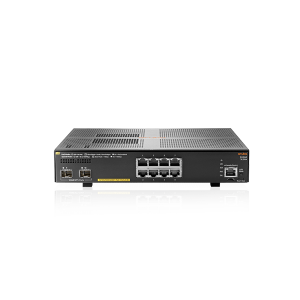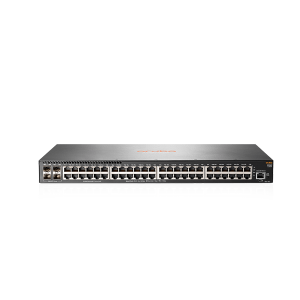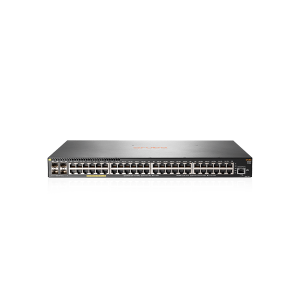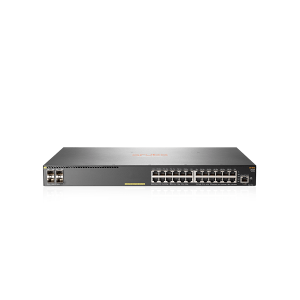Description
This Wi-Fi 5 access point is great for branch offices and hospitality because it is small and inexpensive. The 203H is highly secure, ensuring that corporate applications can run remotely without interruption. This secure and cost-effective access point has wired and wireless options, as well as the ability to pick deployment and operation modes.
Specifications
AP-203H Series Specifications
Unified flexible radio 802.11ac 2×2:2SS hospitality and branch AP with internal antennas
Supports wall-box and desk mount deployments
Wi-Fi Radio Specifications
AP type: Indoor, flexible radio:
5GHz 802.11ac 2×2 MIMO OR 2.4GHz 802.11n 2×2 MIMO1, or
5GHz 802.11ac 1×1 AND 2.4GHz 802.11n 1×11
Software-configurable radio supports 5GHz (Radio 0) and/or 2.4GHz (Radio 1)
5GHz: Two spatial stream Single User (SU) MIMO for up to 867Mbps wireless data rate to individual 2×2 VHT80 client devices
2.4GHz: Two spatial stream Single User (SU) MIMO for up to 400Mbps wireless data rate to individual 2×2 VHT40 client devices (300Mbps for HT40 802.11n client devices)
Support for up to 32 associated client devices per radio, and up to 8 BSSIDs per radio
Supported frequency bands (country-specific restrictions apply):
2.400 to 2.4835GHz
5.150 to 5.250GHz
5.250 to 5.350GHz
5.470 to 5.725GHz
5.725 to 5.850GHz
Available channels: Dependent on configured regulatory domain
Dynamic frequency selection (DFS) optimizes the use of available RF spectrum
Supported radio technologies:
802.11b: Direct-sequence spread-spectrum (DSSS)
802.11a/g/n/ac: Orthogonal frequency-division multiplexing (OFDM)
Supported modulation types:
802.11b: BPSK, QPSK, CCK
802.11a/g/n/ac: BPSK, QPSK, 16-QAM, 64-QAM, 256-QAM
Transmit power: Configurable in increments of 0.5 dBm
Maximum (conducted) transmit power (limited by local regulatory requirements):
2.4GHz band: +18 dBm per chain, +21 dBm aggregate (2×2 mode)
5GHz band: +16 dBm per chain, +19 dBm aggregate (2×2 mode)
Note: conducted transmit power levels exclude antenna gain. For total (EIRP) transmit power, add antenna gain
Maximum ratio combining (MRC) for improved receiver performance
Cyclic delay/shift diversity (CDD/CSD) for improved downlink RF performance
Short guard interval for 20MHz, 40MHz and 80MHz channels
Space-time block coding (STBC) for increased range and improved reception
Low-density parity check (LDPC) for high-efficiency error correction and increased throughput
Transmit beam-forming (TxBF) for increased signal reliability and range (2×2 mode)
Supported data rates (Mbps):
802.11b: 1, 2, 5.5, 11
802.11a/g: 6, 9, 12, 18, 24, 36, 48, 54
802.11n: 6.5 to 300 (MCS0 to MCS15)
802.11ac: 6.5 to 867 (MCS0 to MCS9, NSS = 1 to 2 for VHT20/40/80)
802.11n high-throughput (HT) support: HT 20/40
802.11ac very high throughput (VHT) support: VHT 20/40/80
802.11n/ac packet aggregation: A-MPDU, A-MSDU
1 256-QAM modulation (802.11ac) supported by the 2.4GHz radio as well.
Wi-Fi Antennas
Two integrated dual-band moderately directional antennas for 2×2 MIMO with maximum individual antenna gain of 4.9dBi in 2.4GHz and 6.0dBi in 5GHz. Built-in antennas are optimized for vertical orientation of the AP. The horizontal beamwidth is roughly 120 degrees.
Combining the patterns of each of the antennas of the MIMO radios (in 2×2 mode), the peak gain of the effective per-antenna pattern is 2.3dBi in 2.4GHz and 3.4dBi in 5GHz.
Other Interfaces
Uplink: 10/100/1000BASE-T Ethernet (RJ-45, back)
Auto-sensing link speed and MDI/MDX
802.3az Energy Efficient Ethernet (EEE)
PoE-PD (input): 48 Vdc (nominal) 802.3af/at PoE
Local: 10/100/1000BASE-T Ethernet (RJ-45, bottom)
Auto-sensing link speed and MDI/MDX
802.3az Energy Efficient Ethernet (EEE)
Passive pass-through interface (two RJ-45, back and bottom)
USB host interface (Type A connector)
For Aruba LS-BT1USB BLE radio modules only
Visual indicators (LEDs):
Power/system status
Radio status
Local network port status
Reset/LED control button (“paperclip access”)
Factory reset (when activated during device power up)
LED control: toggle off/normal
Serial console interface (custom, uUSB physical jack)






